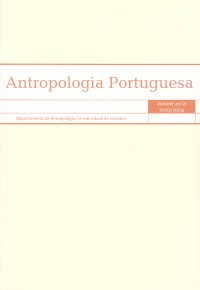Please use this identifier to cite or link to this item:
https://hdl.handle.net/10316.2/29348| Title: | Religion and the social order: disposal of the dead in San Miguel Aguasuelos, Mexico | Authors: | García Valencia, Enrique Hugo | Keywords: | Doble exequias;velorio;antropofagia;novenario;cabo de año;Todos Santos;Double exequies;wild wakes;anthropofagi;“novenario”;“cabo de año”;“Todos Santos” | Issue Date: | 2004 | Publisher: | CIAS - Centro de Investigação em Antropologia e Saúde | Abstract: | It is argued in this essay that the disposal of the dead in San Miguel
Aguasuelos involves a double exequies whereby the body and the soul are disposed
separately in two ceremonies that have previously been confused as one.
The ceremonies for the body last two days at most and include the wake and the
burial. The ceremonies for the soul are more complicated and comprise a “novenario”
(nine days of prayers), “cabo de año” (a replica of the “novenario”) and
the near national feast of “Todos Santos”. In the wake, burial, and ceremonial
meals that accompany funerals, a contrast is manifested between the eagerness of
earth to eat corpses, and the care of mourners not to show themselves as human
flesh eaters. Funerary rites seem to have developed independently from church
and state control as a consequence of the indigenous population having taken
advantage of the chronic antagonisms between them. Me propongo mostrar en este ensayo que en la disposición de los muertos en San Miguel Aguasuelos, México tenemos un caso de dobles exequias, por las cuales se dispone, separadamente, del cuerpo y del alma en dos ceremonias, que ordinariamente se confunden en una sola. Las ceremonias para el cuerpo duran normalmente dos días a lo más e incluyen el velorio y el entierro. Las ceremonias para el alma son mucho más complicadas e incluyen el “novenario” (nueve días de oraciones), el “cabo de año”, (una réplica del novenario) y “Todos Santos” (que es casi una fiesta nacional en México). En el velorio, entierro y las comidas ceremoniales que los acompañan, existe un contraste entre la voracidad de la tierra por consumir cadáveres, y el cuidado con que los deudos evitan cualquier acción que pudiera interpretarse en el sentido de que ellos se comen la carne del difunto. Los habitantes de San Miguel, y en general de México, parecen haber desarrollado sus ritos funerarios aprovechándose de los antagonismos permanentes entre la Iglesia Católica Romana y el Estado Mexicano, conservando características peculiares y autónomas. |
URI: | https://hdl.handle.net/10316.2/29348 | ISSN: | 2182-7982 | Rights: | open access |
| Appears in Collections: | Antropologia Portuguesa |
Files in This Item:
| File | Description | Size | Format | |
|---|---|---|---|---|
| ap20-21_artigo2.pdf | 752.79 kB | Adobe PDF |  |
Items in DSpace are protected by copyright, with all rights reserved, unless otherwise indicated.
